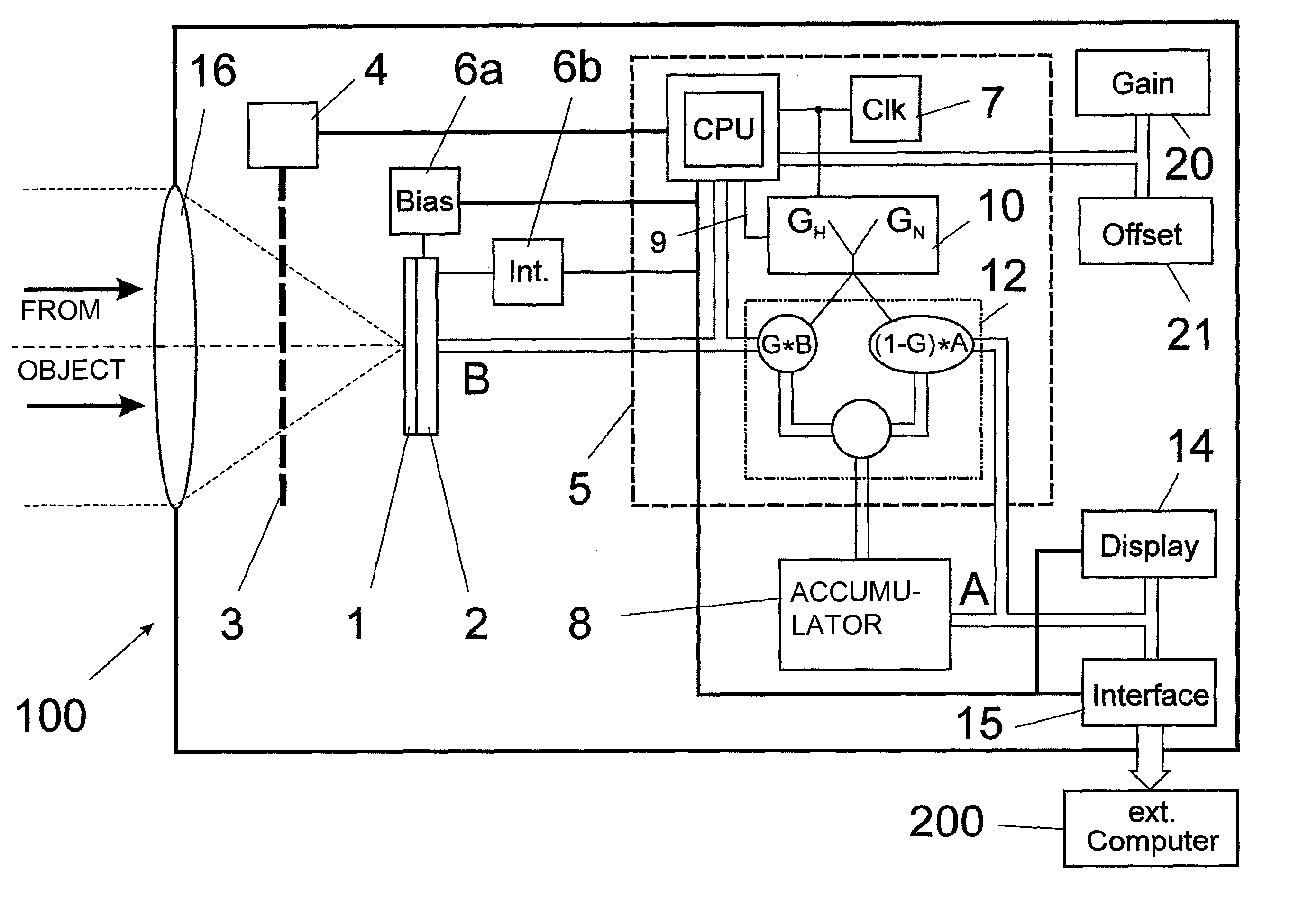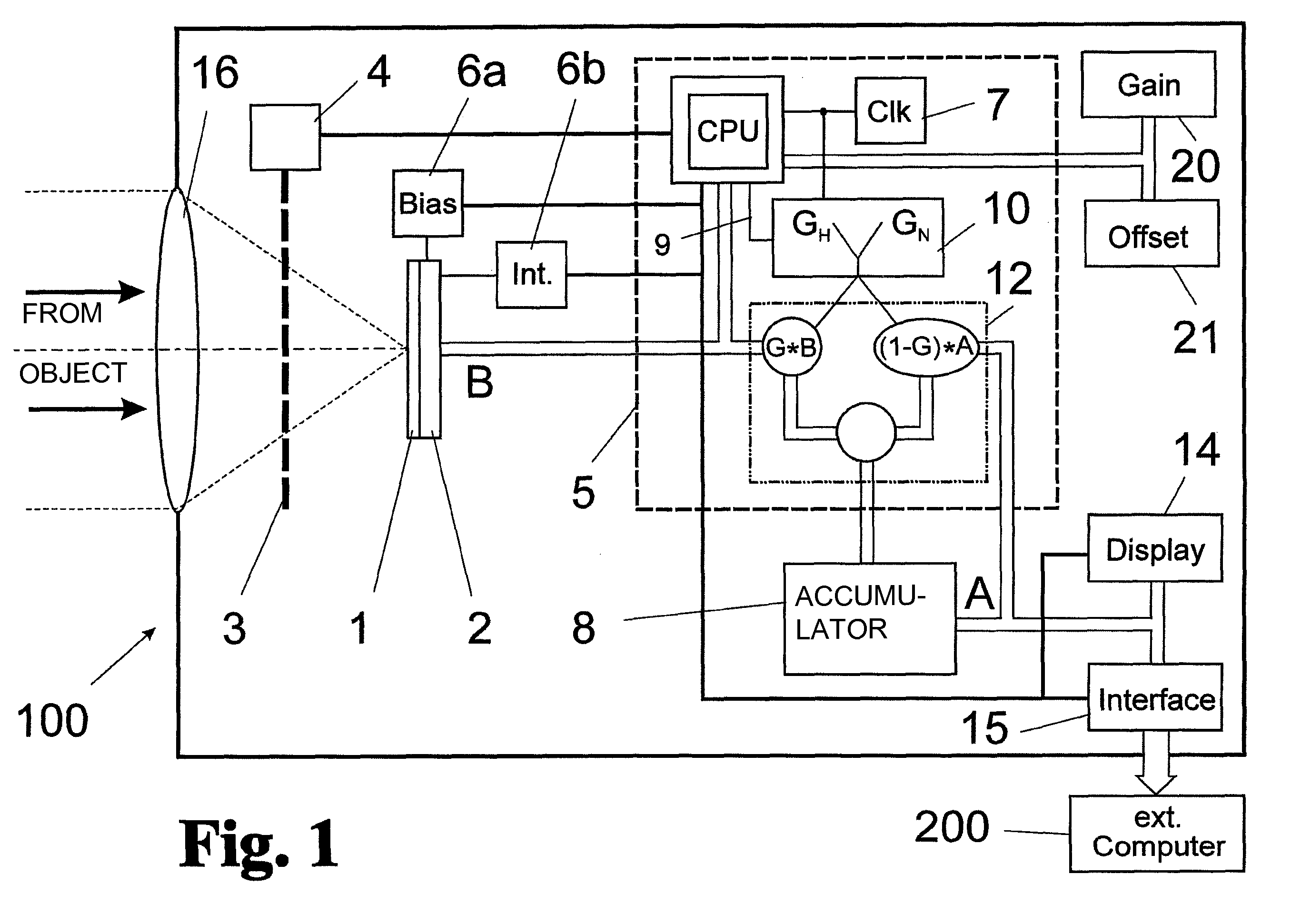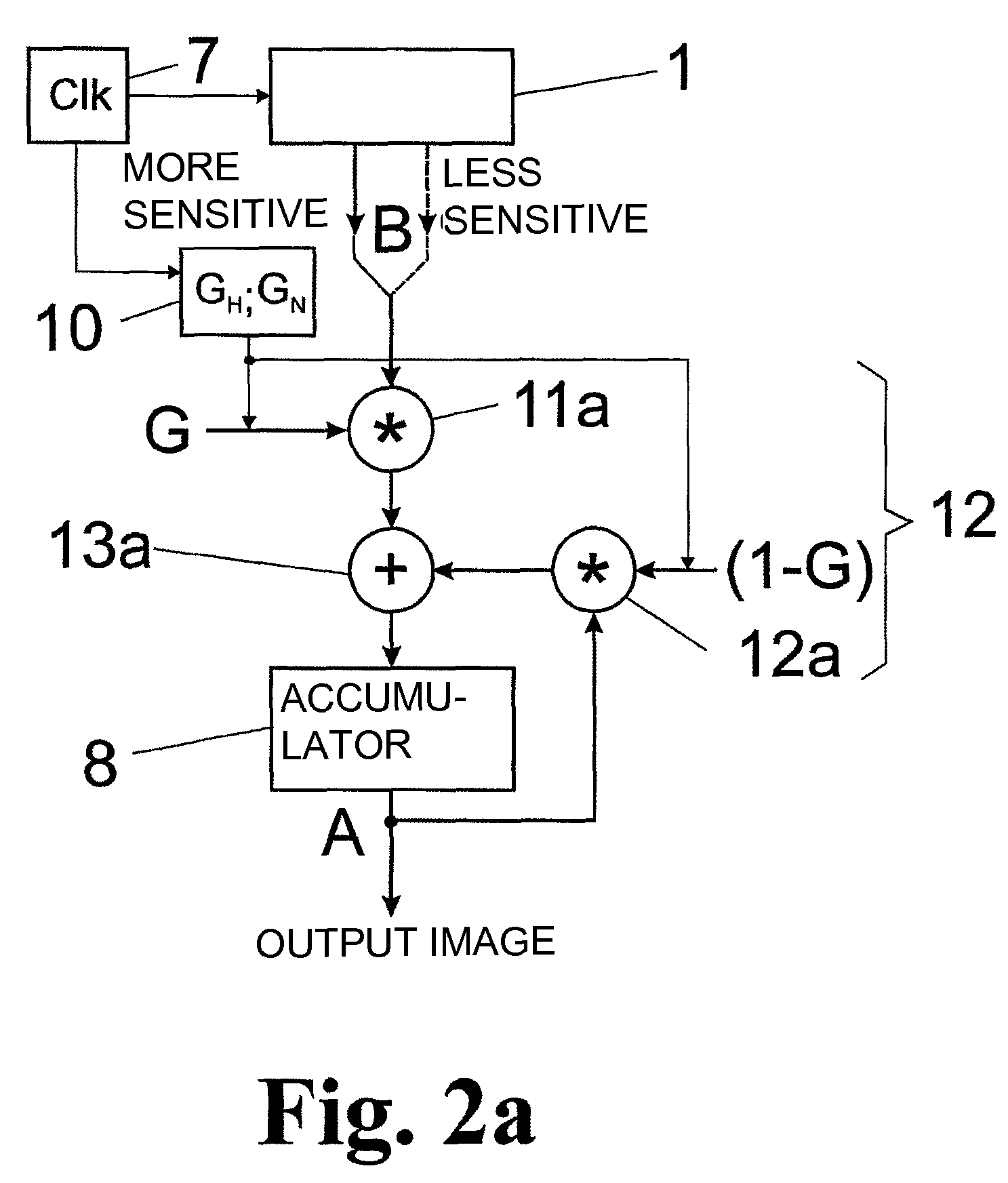Thermal imaging camera
a technology of thermal imaging and camera, which is applied in the field of thermal imaging cameras, can solve the problems of not primarily in the sensitivity range of the microbolometer components, but in the selection of suitable temperature ranges and a suitable display, and is not able to be meaningfully interpreted by the user, so as to reduce the amount of memory needed for buffering and processing.
- Summary
- Abstract
- Description
- Claims
- Application Information
AI Technical Summary
Benefits of technology
Problems solved by technology
Method used
Image
Examples
Embodiment Construction
[0054]Referring to the drawings in particular, FIG. 1 shows the components of a thermal imaging camera according to one embodiment of the present invention and the networking thereof. To record a thermal image, IR radiation is imaged by means of an IR optical system 16 onto a matrix-like detector unit 1—hereinafter also called FPA (Focal Plane Array)—which is read as a complete frame in a pixel-based manner by means of the corresponding reading unit 2 and is transmitted as an original image B of the imaged thermal scene.
[0055]A processor unit 5 actuates a shutter unit called shutter 3 for opening or closing the imaging ray path by means of a shutter control 4. An original image B is produced with the shutter 3 opened.
[0056]With the shutter 3 closed, a background image of the shutter 3 is produced as a reference, which is used to compensate inhomogeneities of the microbolometer components of the FPA 1 (“non-uniformity correction” NUC, not being considered here in more detail).
[0057]P...
PUM
 Login to View More
Login to View More Abstract
Description
Claims
Application Information
 Login to View More
Login to View More - R&D
- Intellectual Property
- Life Sciences
- Materials
- Tech Scout
- Unparalleled Data Quality
- Higher Quality Content
- 60% Fewer Hallucinations
Browse by: Latest US Patents, China's latest patents, Technical Efficacy Thesaurus, Application Domain, Technology Topic, Popular Technical Reports.
© 2025 PatSnap. All rights reserved.Legal|Privacy policy|Modern Slavery Act Transparency Statement|Sitemap|About US| Contact US: help@patsnap.com



